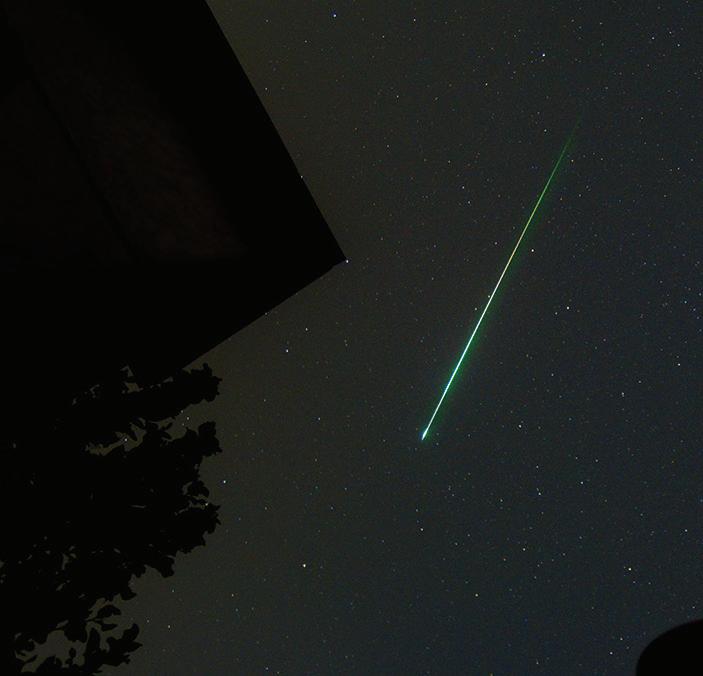
2 minute read
WHAT IN THE WORLD
COFFEE CUP ROADS
AUSTRALIA
A Sydney-based asphalt company is hoping it will soon be able to use discarded coffee cups to surface roads. Used cups, lids and liners are shredded into small fragments and turned into cellulose to help bind a road surface together. A test strip has proven to be strong and able to withstand heavy trucks. The company is getting closer to using the product on actual roads in Australia with the goal to one day have a road made entirely of recycled material.—The Guardian

GREEN RAIN
NEW ZEALAND
Bits of the Swift-Tuttle comet have recently been spotted flying through New Zealand skies. These bright green fireballs were travelling up to 60 kilometres per second, releasing enormous amounts of heat very quickly. It is believed they came from a giant meteor that exploded above the sea near Wellington weeks prior.—The Conversation

SHADE ON THE MOON
UNITED KINGDOM
Lunar scientists have recently identified around 200 zones on the moon that are about the average temperature in San Francisco. These shaded pits are perfect for humans to shelter from extreme temperatures found elsewhere on the moon. These spots could also shield astronauts from the dangers of solar wind, micrometeorites and be an ideal lunar base for future expeditions.—Live Science

FUTURISTIC MEGACITY
SAUDI ARABIA
Designs have been released for a $US500 billion futuristic megacity stretching over 170 kilometres. The zero-carbon city, clad in mirrors, will be located near the Red Sea in Saudi Arabia and surrounded by lush hanging gardens. The structure aims to house nine million people, achieve complete sustainability and remove pollution by having no traditional streets or cars.—9 News
MONEY FACTS ABOUT 4
NO TREES WERE HARMED IN THE MAKING
Trees aren’t cut down to make the Aussie or Kiwi banknote. Australian and New Zealand notes are made of polymer, which has a waxy feel. Notes in the United States and many other countries are made of cotton and linen fibres. Some English notes even contain traces of animal fat (sorry, vegans).
GOT SALT?
Before money existed, other things were used as a form of currency. In Central America, they used cocoa beans. In India and Africa, they used seashells. Many parts of Asia used tea bricks and Holland used tulip bulbs. The term “salary” comes from the Latin term “salarium” meaning “salt money”, which was used by Ancient Rome.
THE ULTIMATE PEST-DETERRENT
A few coins can deter those annoying slugs that are putting holes in your lettuce. The copper in coins repels insects who don’t like the bitter taste. A handful of coins in a zip-lock bag filled with water and put above your window or door can also keep insects away. Scientists say the reaction of water and coins combined reflects light in many different directions, interfering with flies’ vision.
WHOSE FACE MADE IT FIRST?
The Romans were the first to stamp the image of a living person onto a coin. Though Julius Caesar took the lead imprinting his own face first, Queen Elizabeth II holds the record for appearing on more currencies than any other person in history.









